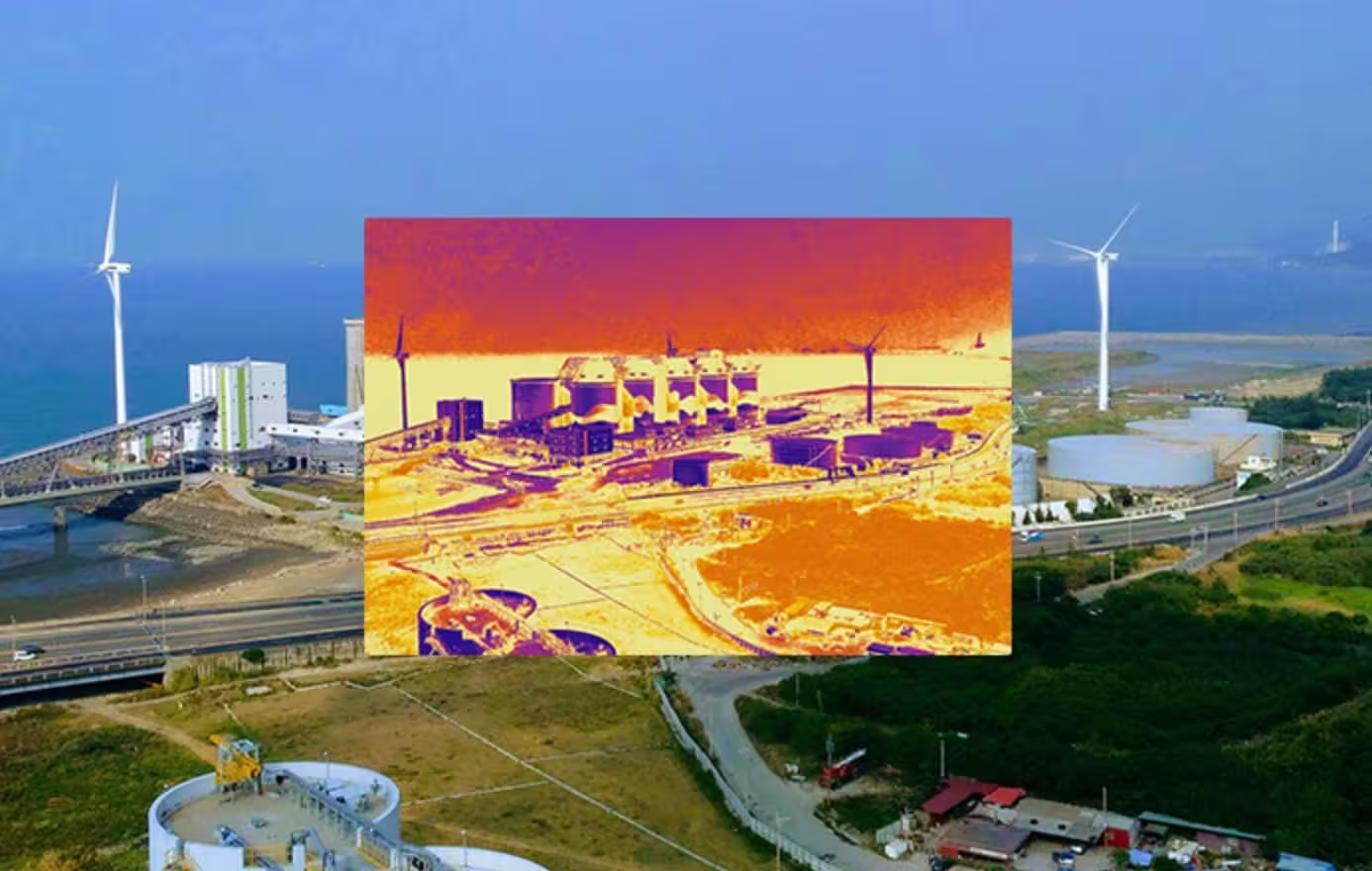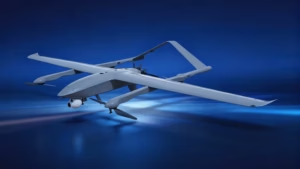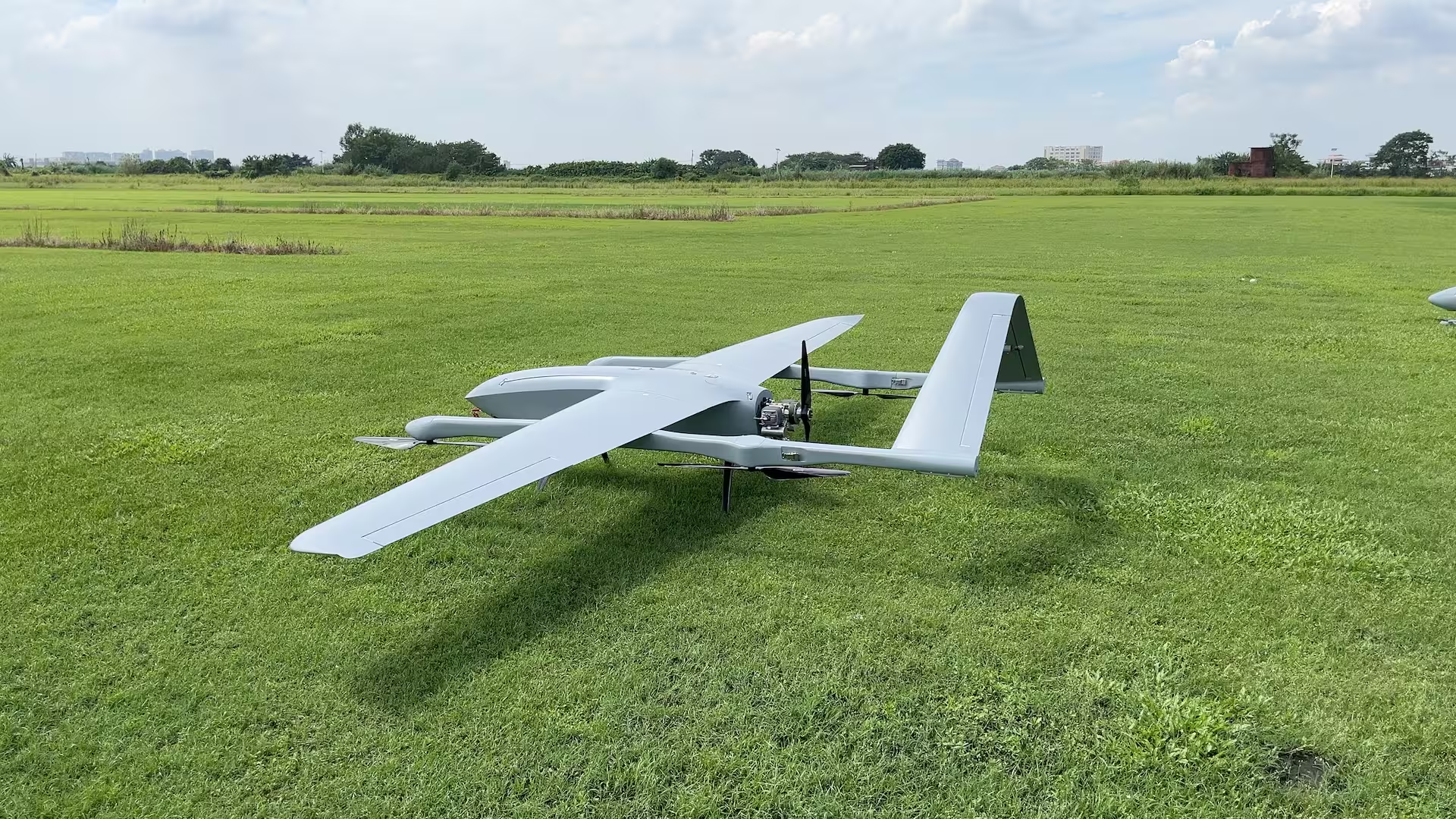There are aircraft built to fly, and there are aircraft engineered to impose dominance on the airspace. The MMC M10 belongs firmly to the latter category—a long-endurance, heavy-lift, electrically powered vertical-takeoff fixed-wing platform designed not as a tool but as an operational force multiplier. Everything about the airframe rejects ornamentation and favors pure functional intent. Every surface, every joint, every subsystem is the direct outcome of mission-first engineering.
This is not a drone that adapts to the environment. This is a machine that forces the environment to adapt to it.
With an endurance reaching 150 minutes, a 10 kg mission payload, and cross-domain compatibility stretching from mapping to reconnaissance to precision strike roles, the M10 occupies the space where industrial aviation converges with tactical autonomy.
What follows is a breakdown—not a narrative—of why the M10 exists, what operational gaps it closes, and how its design philosophy transforms even the most complex mission architectures.

1. A Structure Designed for Flight Beyond Constraints
The M10 is a vertical-takeoff fixed-wing system, a configuration that merges the best properties of multirotors and conventional aircraft. In operations, this translates to two advantages that are rarely compatible within a single airframe:
- Runway independence
- High-efficiency forward-flight endurance
The carbon-fiber composite architecture contributes significantly to this dual capability. A wingspan of 3.964 meters and a length of 1.916 meters create a lift profile that turns electrical energy into range instead of wasted heat. Operating weight begins at 28 kg, a mass optimized for aerodynamic efficiency rather than complexity.
The M10 behaves like a multirotor when it needs to lift off from hostile terrain—loose sand, uneven rock, unstable rooftops—and transitions to a fixed-wing state where it consumes an order of magnitude less power per kilometer. This combination allows flight missions that are otherwise impractical for purely multirotor aircraft.
The result: mission radius expansion without logistical overhead.
Deployment is equally optimized. A modular tool-free quick-lock system allows complete assembly in under three minutes, compressing mission prep time and enabling rapid tasking cycles.
2. Endurance That Extends Beyond Expectation
Electrical propulsion is a field governed by harsh physics. Most airframes break under the tension between endurance and payload. The M10 does not. It folds endurance into the mission profile as a given rather than an exception.
Endurance Benchmarks
- 150 min — no payload
- 140 min — 1 kg payload
- 125 min — 5 kg payload
- 110 min — 8 kg payload
- 100 min — full 10 kg load
These figures position the M10 not as a typical electric VTOL but as a persistent aerial system capable of outlasting operational cycles, remaining present when battery-limited UAVs have already withdrawn. For extended patrols, border sweeps, offshore inspection, long-route mapping, or overwatch missions, endurance becomes the determining metric. The M10’s power system—four or six 30000 mAh lithium packs—sustains flight behaviors that require both high thrust and consistent cruise efficiency.
While other UAVs allocate energy to stay airborne, the M10 allocates energy to complete missions.
3. Payload Flexibility: A Platform That Accepts the Mission, Not the Other Way Around
Payload capacity is rarely paired with endurance in electric aerial platforms. The M10 reframes the limitation entirely.
Its 10 kg payload ceiling, combined with a universal payload interface, allows mission modules that transform the aircraft’s operational identity. Each module does not modify the M10; instead, the M10 becomes the ideal carrier for that module.
Supported Payload Categories
- Single-light, dual-light, tri-light EO pods
- LiDAR modules
- Five-lens oblique photogrammetry cameras
- Relay communication nodes
- Forward-looking reconnaissance turrets
- Payload release modules for delivery or tactical deployment
This adaptability creates a single platform capable of acting as a mapping aircraft in one mission, a reconnaissance asset in another, and a precision-delivery vehicle in a third. With multi-role modules, the M10 reduces fleet complexity while expanding operational capability.
It is not merely versatile. It is purpose-agnostic.
4. Environmental Independence: Engineering for the Terrain, Temperature, and Altitude Most Platforms Avoid
Aerial operations occur in the real world, not controlled environments. The M10 is engineered for exposure—cold, heat, density altitude shifts, and atmospheric instability.
Operational Climate Tolerance
- Low-temp range: –40°C
- High-temp range: +60°C
- Relative humidity: 10%–90%, non-condensing
The M10 continues operating where lithium batteries typically fail, where motors lose torque, and where sensors experience thermal instability. By stabilizing performance under thermal extremes, the airframe supports missions in northern high-latitude winters, desert infrastructure zones, and equatorial humidity.
Altitude Capability
- Service ceiling: 5000 m
High altitude is a regime where thin air reduces lift and compromises propeller efficiency. The M10’s hybridized vertical-to-fixed-wing system offsets these limitations, maintaining controllability and thrust even at elevation points that would ground conventional UAVs.
Terrain Compatibility
- Mountainous provinces (Yunnan, Guizhou, Sichuan)
- Plateaus & highland roads
- Forest canopy regions
- Coastal turbulence zones
The M10 rejects the need for ideal terrain. Wherever the mission builds complexity, the airframe absorbs it.
5. Autonomy Architecture: Aerial Intelligence Without Superstition or Speculation
Autonomy is often illustrated as convenience. For the M10, autonomy is a tactical asset.
Core Autonomous Functions
- Fully autonomous vertical takeoff and landing
- Autonomous route execution via ground station
- Low-altitude terrain-following flight
- Front-facing obstacle awareness
- Autonomous tracking and following
- Swarm coordination for multi-unit deployment
- Networking and relay deployment
- Cloud-linked system reporting
Applications extend to scenarios where manual piloting would be inefficient or impossible:
- High-risk inspection corridors
- Repetitive mapping cycles
- Large-area reconnaissance
- Target tracking
- Formation missions over long distance
- Maritime deck operations
The autonomy layer offloads cognitive load from operators, reallocating attention to mission oversight instead of precise joystick manipulation.
6. Transmission Systems: Information That Cannot Be Jammed into Silence
The M10 is more than a flying chassis; it is a data transport mechanism. The value lies in what the aircraft can deliver—and what it can carry back.
Communication Architecture
- 1.4 GHz & 1.7 GHz dual-band transmission
- AES256 encryption
- 50–80 km line-of-sight link
This combination allows real-time telemetry, video, sensor data, and operational feedback to travel across distances previously reserved for fuel-powered systems. The security model prevents interception, spoofing, or link compromise, ensuring that sensors remain an extension of the operator rather than a vulnerability.
The data link is designed not just for range but for resilience.
7. Multi-Role Evolution: Configurations That Rebuild the Aircraft for Each Mission Class
Where most UAVs rely on fixed specifications, the M10 extends through modular variants. Each version is engineered for domain-specific optimization, not as aftermarket adjustments but as alternate forms of the platform.
Available Variant Packages
- Shipborne Version
Reinforced landing protocols, stability under deck turbulence, secure RF links for maritime environments. - Payload-Drop Version
Precision release mechanisms for logistics or tactical actions. - Mapping Version
Optimized for photogrammetry cycles, dense point-cloud generation, and long-range survey sweeps. - Inspection/Reconnaissance Version
Tuned for persistent sensing, target detection, infrastructure surveillance, and rapid-deployment field tasks.
Mission planners no longer need multiple aircraft types for varied operations. A single platform adapts through modular specialization.
8. Mechanical Integrity: A Body Built to Endure, Not to Impress
Structural confidence is not in the visual design but in the internal documentation—the torque resistance, the composite bonding, the vibration damping, the thermal distribution paths. The M10’s carbon-fiber skeleton and internal composite reinforcement prevent energy loss through structural flex, stabilizing sensor payloads and extending mechanical lifespan.
Additional Physical Resilience
- IP54 protection
- 100 A/m magnetic field resistance
- Cross-reinforced fuselage for torsional integrity
In demanding sectors—public safety, energy infrastructure, environmental monitoring—the airframe’s durability directly affects operational continuity. The M10’s chassis is prepared for repeated deployments under rough handling, emergency takeoff cycles, or high-frequency field operations.
9. Operational Velocity: Moving Through Air Instead of Fighting It
Speed is not a luxury; it is a mission vector. It determines response time, coverage radius, and target acquisition capability.
Flight Dynamics
- Cruise: 23 m/s
- Max speed: 35–40 m/s
- Climb rate: ≤3 m/s
- Descent: ≤2.5 m/s
These parameters place the M10 in the operational space where it can outrun weather fronts, reposition rapidly across extended mission corridors, and maintain consistent traversal efficiency. For reconnaissance, speed is information. For mapping, speed is coverage. For strike-support, speed is survival.
10. Deployment Ecosystem: A System That Integrates Into Existing Infrastructure
The airframe’s integration is not isolated to its physical assembly. It extends into command software, swarm logic, data processing chains, and multi-vehicle network control. Ground stations manage autonomous flight, route scheduling, and health monitoring through a unified interface.
Deployment Characteristics
- 3-minute assembly time
- Automated VTOL processes
- Cloud-based fleet monitoring
- Cross-mission tasking capability
Each element reduces operational friction and accelerates readiness cycles.
Conclusion: An Aircraft Designed for Operational Superiority, Not General Utility
The M10 does not compete with typical UAVs. It competes with the operational limitations they impose.
This is an aircraft designed for long-endurance missions where persistence decides outcomes. For heavy-lift tasks where precision matters. For harsh climates, complex terrain, extensive ranges, and payload architectures that demand more than a basic multirotor can provide.
The M10 does not merely perform missions. It completes them.
If your operational environment requires reach, endurance, flexibility, and absolute reliability, the M10 is not an option.
It is the standard.




